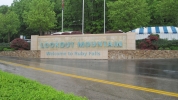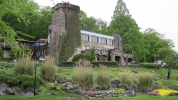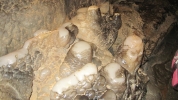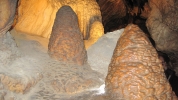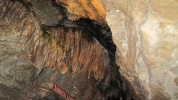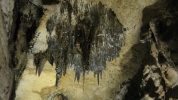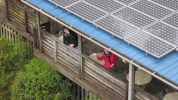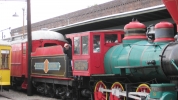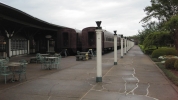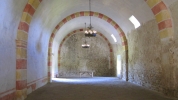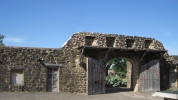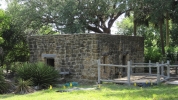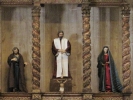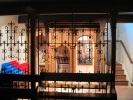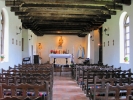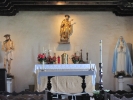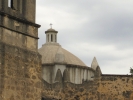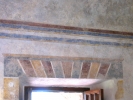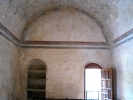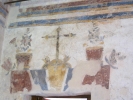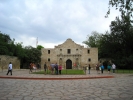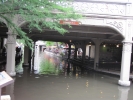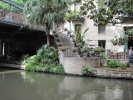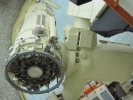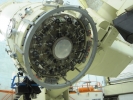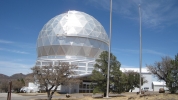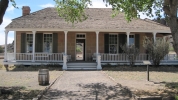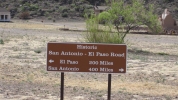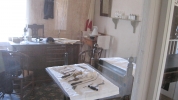04/28/2013 to 05/08/2013
As usual we never take a direct route. Our annual trip to Maryland was through Georgia where we spent some time with my sister and her husband. Naturally we got in some fun tourist stuff during our visit.
Then on to the Texas portion of the trip. In San Antonio we enjoyed the Riverwalk as well as the Mission Trail. Yes, more missions from the Spanish occupation.
As we headed west we managed to visit the Caverns of Sonora, The McDonald Observatory and historic Fort Davis.
Even though we crossed off some items on our "must see" list we added a few more. Ah, so much to see, not enough time and no lottery money.
- Ruby Falls - Chattanooga
- Chattanooga Choo-Choo
- Mission San Jose - San Antonio
- Mission San Juan - San Antonio
- Mission Espada - San Antonio
- Espada Aqueduct
- Mission Concepcion - San Antonio
- The Alamo - San Antonio
- San Antonio Riverwalk
- Caverns of Sonora - Texas
- McDonald Observatory - Texas
- Fort Davis National Historic Site - TX
Since we are visiting Diane & Steve again it is only fitting we complete the schlock tourist sites. Last time it was Rock City. This time it is Ruby Falls.
The area is beautiful, although it was a bit cold and rainy. The cave, well it has been abused over the decades but it is still a fun little trip.
What trip to Chattanooga would be complete without a quick stop at the Choo-Choo? Not too much happening this day since it's rainy and still a few weeks before summer break but anything historical deserves a couple of lines.
You can rent the sleeper car, dinning car or stay at the historic hotel. Sounds like fun
Of the 4 missions on Mission Trail, San Jose is known as the "Queen of the Missions". It is the largest and was almost fully restored in the 1930s by the WPA. That same group that gave us so many great roads and national parks.
The church and remaining buildings are monuments to what can be accomplished with a plan, a will, lots of natural resources and slave labor.
Officially known as Mission San Juan Capistrano, it was founded in 1716. The church and granary were completed in 1756. Of the four, it is the smallest.
The Archdiocese of San Antonio completed repairs and a facelift to the church this year. As with the others, it is a functioning, active church.
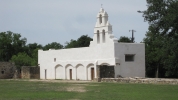
The San Juan Mission. It has recently had new white plaster applied and the foundation has been stabilized
This mission was founded in 1690 near present-day Weches, Texas and was the first mission in Texas. It moved to the San Antonio River area in 1731 and was renamed Mission San Franciso de la Espada.
The church was completed in 1756. Some of the original buildings foundations are still preserved on-site. The Convento is occupied as this is a functioning church.
Obviously the friars have a green thumb.
This aqueduct was built in 1745 by the Franciscans - well more likely the Indian laborers - to irrigate the crops at Mission Espada. It ran for 15 miles and irrigated 3,500 acres. It is the only remaining aqueduct from that era, and in 1965 it was designated a National Historic Landmark.
Naturally work has been done to conserve the water channel, but iti s probably close to the original design
This mission was dedicated in 1755. It looks today as it did when it was constructed. It is the oldest unrestored stone church in America. The centuries have washed away the colorful designs that once adorned the exterior, but the structure itself is amazing as is.
The interior of the church has been repainted to replicate the original frescos. Art historians worked to clean these and based on their restorations the patterns and colors were restored.
Visiting The Alamo is almost surreal. It sits smack dab in downtown surrounded by tall buildings. Thankfully the plaza in front gives it some space as do the enclosed courtyards.
Of all the missions, it was my least favorite. OK, I know the history and I am sorry so many died there but I might have enjoyed it a bit more if it were presented as the historical site it is rather than a holy place.
Since you can not take pictures inside, all you get is the outside. HMM, I can take pictures inside a church but not here.
San Antonio is famous for many things, but the biggest tourist draw is The Riverwalk and The Alamo. Believe me, the Riverwalk is the best of the two.
A lot of effort has gone into restoring and preserving this unique little area in the heart of downtown San Antonio. The walk sits below street level so all the shops and restaurants have access from both levels.
The weather was just perfect for strolling and eating at the water side tables. Another fun thing about San Antonio is every resident seems to like to double as a tour guide giving you tips on what to see, directions and historical facts.
For years we have driven by the sign on I-10 but just never bothered to stop. We figured it was the usual "family" cave that has been trodden into submission for a fee with maybe one or two nice formations left. Well let me tell you, we were soooooo wrong.
The older front section of the cave is pretty well messed up, but the rest is just amazing. The Mayfield family has taken the cue from Kartchner Caverns and implemented many of the same protective measures. What this means for you as a visitor is a small group, an involved tour guide, and some of the most delicate, beautiful formations we have ever seen.
The only complaint we have is our cameras do not do this cave justice. You really have to see it to appreciate it. However, that did not stop us from taking a zillion pictures. Only about a million will be posted here.

Oh so many helictites. I have never been in a cave that was so full of these lovely, delicate displays
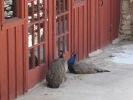
There were peacocks strolling the grounds. These two obviously thought they should be allowed inside
Are you sensing a theme with the last few trips? Yup, another observatory. Hey, you just can not get enough of these once you start and this was a lot of fun.
Your ticket includes an interactive solar observation. What this means is they have a scope dedicated to watching the sun and you get to see the activity like flares, spots, and more. Really cool, or maybe hot is a better word.
Then you board a small shuttle to ride up to the 107 inch scope and the great part of this tour was our guide, Mark, actually rotated the dome and the telescope. Apparently he can do this when no study is planned.
Our newly acquired knowledge of mirror construction served us well as we were able to ask intelligent questions and actually almost understand the answers.
That large black thing above my head is an alternate lens. Wonder how they get it inside the telescope
This telescope is a multi-mirrored design. Unfortunately it is hard to see the mirror due to the reflection.
Just down Highway 118 from the McDonald Observatory is historic Fort Davis.
It was established in 1851 to protect emigrants, freighters, mail coaches, and travelers on the San Antonio-El Paso Road heading West. When the Civil War broke out the Federal Government left - wonder why? - but returned in 1867 and the fort became a key post in the battle with the Comanches and Apaches.
Today it is recognized as one of the best examples of a frontier military post in the Southwest. The Park Service has done an excellent job of reconstructing and furnishing several of the homes as well as the hospital.
If you like old forts this is a good one. We enjoyed it and wouldn't mind another visit if we pass that way again
The view from the hospital porch to the back of the officers quarters and beyond to the enlisted mens quarters.
